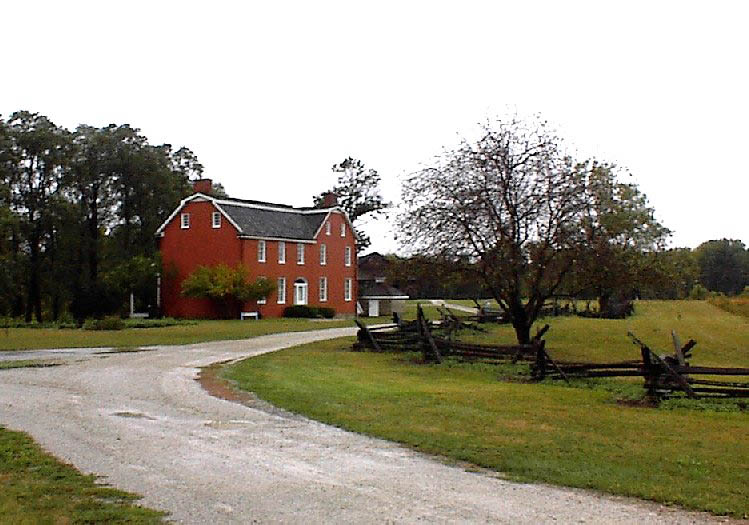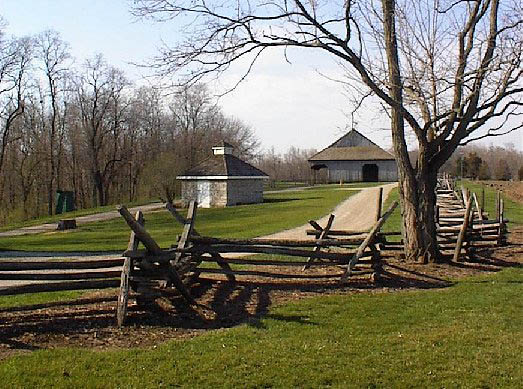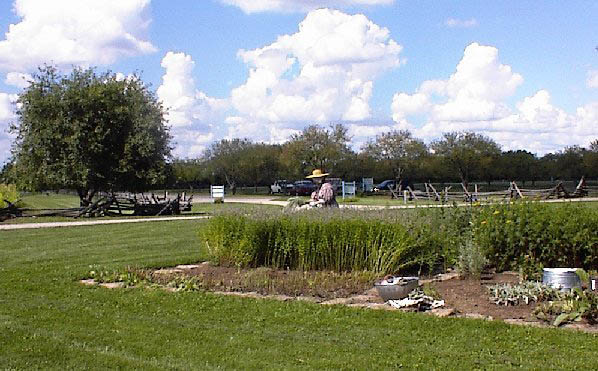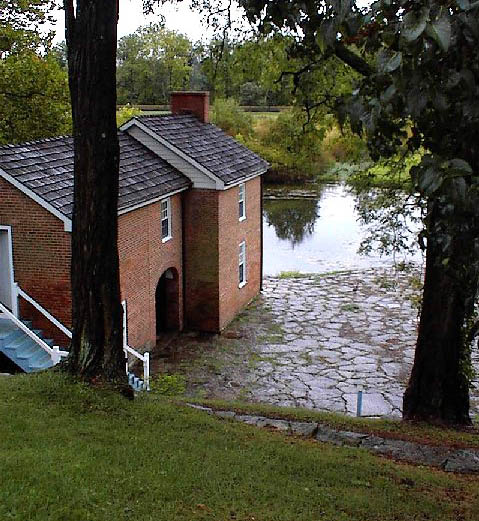
Listing sponsored by Listing sponsored by
KappaElastin™
Scientific
Breakthrough. No Shots
Science response to skin aging.
www.kappaelastin.com
9845 North Hardin Road
Piqua, Ohio
Phone: 513-773-2522 -- 800-752-2619
TTY:
Located in the Great Miami River Valley, the 174-acre Piqua Historical Area offers visitors the opportunity to discover several cultures in one setting.
A variety of settlements have occupied the region over the years. A
prehistoric
Indian earthwork testifies to the area's earliest inhabitants. From
1749-52,
the Miami Indian village here was an English trading post known as Fort
Pickawillany. Fort Piqua was built in 1794 as a supply post for General
Anthony
Wayne's campaign against Indians in northern Ohio. It was as a wagoner
with
Wayne's army that John Johnston first saw the land that later would
become
his "Upper Pickaway Farm," just 400 yards southwest of Fort Piqua.

John Johnston, federal Indian agent for western Ohio from 1812-29, was noted for the honesty and enlightenment he showed in dealing with Indians. A prominent community and business leader, Johnston had many interests, including canals, education, and agricultural development.
Johnston was eleven years old when his family emigrated from Ireland
in 1786
and settled near Carlisle, Pennsylvania. Eight years later, he
journeyed
to the Ohio country, hauling supplies for Wayne's army. During this
trip,
he first saw the site that later would become his home. Johnston
remembered
the land with its large spring - over which a springhouse now stands -
even
after he returned to Pennsylvania. But eleven years would pass before
he
would be able to buy the property.

In 1802, Johnston was appointed to the Fort Wayne Indian Agency. He
married
Rachel Robinson just before heading west; their honeymoon was the
horseback
trek to Fort Wayne. While there, Johnston learned that Fort Piqua land
had
passed into private hands. When proprietor James Flinn defaulted on
payment
of the federal land fee in 1804, Johnston was able to buy 235 acres.

Although Johnston remained at Fort Wayne for several more years, he was able to have various improvements made to the farm. By 1808, a log house and barn had been erected, and a large apple orchard was planted. In 1810, construction began on the present brick house, which was completed in 1815.
Johnston intended to farm full-time when he resigned his post and
moved to
Piqua in 1811. But because of the volatile nature of the frontier just
before
the War of 1812, Johnston continued his agency work. In March 1812, he
was
appointed as federal Indian agent at Piqua, charged with keeping the
Indians
neutral during the conflict. He won the confidence and friendship of
the
Indians, as well as commendations from white men, for his sympathetic
and
just dealings with the Indian tribes.

Greatly respected by the Indians for his insight into their problems
during
the difficult transition from Indian to white domination, Johnston was
one
of their few champions in the first half of the nineteenth century. He
served
as agent until 1829; in 1841, he was named commissioner to negotiate
the
purchase of Wyandot land, Ohio's last Indian-held tract.

As a pioneer in the agricultural development of western Ohio, Johnston centered his farm operations around fruit and pork production. He used the latest mechanical devices and avidly corresponded with agricultural magazines. His farm products were shipped to Cincinnati on the Miami and Erie Canal, which bordered his farmland.
Through the years, Johnston was active in community affairs, as well as state and national politics. He was a close friend of William Henry Harrison, the first Ohioan elected president. Johnston's intimate knowledge of western Ohio contributed to his participation on the commission that built the Ohio Canal System, and to his twenty-five years of service as a trustee of Miami University.
Johnston died in 1861 at age eighty-five. In one of his last letters, he had observed with irony that he was born at the birth of the Republic, and expected to die during its apparent dissolution in the Civil War. He is buried in the family cemetery on the farm.
ln his day, Johnston was characterized by American Indians as "our
beloved
friend." Today, Johnston is recognized as "one of the most useful men
of
his generation." As nineteenth-century historian Henry Howe said of
him,
"He was indeed a sterling man in every way; Ohio should not forget
him."

Today, the Piqua Historical Area offers visitors a variety of ways to experience frontier life.
The Canal Boat Landing is located on a restored mile-long segment of the Miami and Erie Canal, which linked Cincinnati and Toledo, and served the Piqua area from 1839 to 1913. The dock is the departure point for visitors riding the General Harrison, a replica of a mule-drawn mixed-cargo canal boat of the 1840-1850 era.
The Historic Indian Museum houses artifacts and graphics related to American Indians, with emphasis on the tribes associated with the Ohio country from the seventeenth to the nineteenth centuries. Displays show how the introduction of European culture led to the exchange and substitution of tools, weapons, and other objects between Indians and white settlers. The rest rooms here are the only ones on the grounds. The site of Fort Piqua is west of the museum.
The Johnston Farm takes visitors back to the early nineteenth century, when Johnston farmed here. Costumed interpreters and craft demonstrators help create an authentic atmosphere. Buildings on view include the original farmhouse, springhouse, log barn, fruit kiln, and summer kitchen, and a reconstructed cider house.
Also located on the farm site is a prehistoric earthwork, probably constructed by the Adena people about two thousand years ago for ceremonial purposes.
Along state Route 66, next to the Piqua Historical Area, is the Johnston cemetery, the resting place of many of the area's early pioneers.
Memorial Day weekend - Labor Day:
After Labor Day- October:
Groups of twenty or more by appointment.
For information about events and other places of interest around the state, please call toll-free 1 800 BUCKEYE.
Do you have any additional
comments concerning this site?
Do you wish to receive some information on
how
to get your museum
on the Museums Tour?